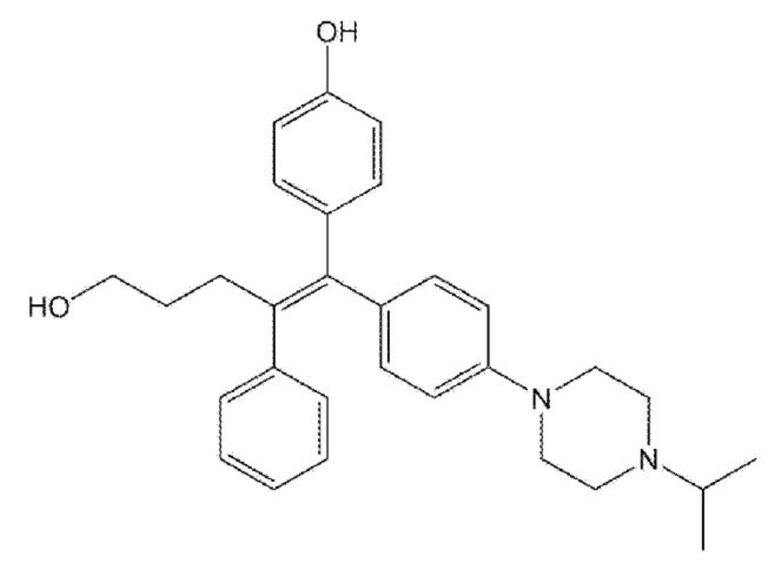FIELD: medicine; pharmaceutics.
SUBSTANCE: group of inventions relates to pharmaceutical industry, specifically to the use of a pharmaceutical composition containing as an active ingredient an agent capable of inhibiting activity of an oestrogen-related gamma receptor (ERRγ) protein, as well as to a method of treating sorafenib-resistant liver cancer. Use of a pharmaceutical composition containing as an active ingredient an agent capable of inhibiting activity of an oestrogen-related receptor protein γ (ERRγ), for preventing or enhancing treatment of sorafenib-resistant liver cancer, where agent for inhibiting activity of protein ERRγ is a compound of following formula 1 or a pharmaceutically acceptable salt thereof [Formula 1]
 .
.
Use of a pharmaceutical composition containing as an active ingredient an agent capable of inhibiting activity of an oestrogen-related receptor protein γ (ERRγ), to inhibit liver cancer resistance to sorafenib, where agent for inhibiting activity of protein ERRγ is a compound of following formula 1 or a pharmaceutically acceptable salt thereof. Use of a pharmaceutical composition containing an agent capable of inhibiting the activity of an oestrogen-related receptor protein γ as active ingredients (ERRγ), and sorafenib, for preventing or treating sorafenib-resistant liver cancer, wherein the ERRγ protein activity inhibition agent is a compound of following formula 1 or a pharmaceutically acceptable salt thereof. Method of treating sorafenib-resistant liver cancer, comprising administering an agent capable of inhibiting the activity of the oestrogen-related receptor protein γ (ERRγ), a patient defined as a patient with sorafenib-resistant liver cancer, where the method involves the following steps: (a) measuring the mRNA expression level of the ERRγ gene or a protein expressed therefrom in a biological sample recovered from a patient with liver cancer; (b) measurement of the mRNA expression level of the ERRγ gene or a protein expressed therefrom in a biological sample recovered from a patient with liver cancer other than sorafenib-resistant liver cancer; and (c) determining the patient with liver cancer at stage (a) as a patient with sorafenib-resistant liver cancer and administering said agent in an effective amount to the patient, when the mRNA expression level of the ERRγ gene or a protein expressed therefrom, measured at step (a), is higher than the mRNA expression level of the ERRγ gene or protein expressed therefrom, measured at step (b), where agent for inhibiting activity of protein ERRγ is a compound of following formula 1 or a pharmaceutically acceptable salt thereof.
EFFECT: use of the group of inventions provides a solution to the problem of overcoming drug resistance of sorafenib to enhance its anti-tumour action due to the use of the agent, which is able to inhibit ERR protein activityγ or expression of its gene and thereby increase the susceptibility of liver cancer cells to sorafenib.
7 cl, 6 dwg, 3 ex
Authors
Dates
2024-08-27—Published
2020-11-26—Filed